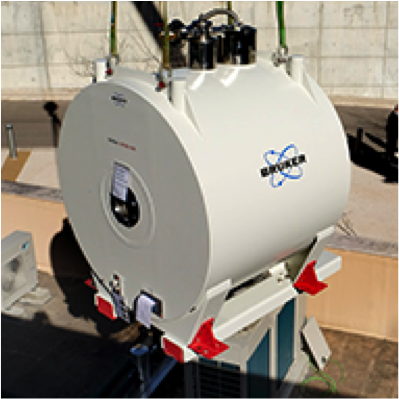State-of-the-art Magnetic Resonance Imaging (MRI) scanners will establish Champalimaud Centre for the Unknown (CCU) as one of the most advanced preclinical imaging institutions worldwide.
Magnetic Resonance Imaging techniques are universally used for diagnosis of diseases, as well as for research purposes. They are non-invasive and safe, as the magnetic field they harness and the RF pulses that they use are completely non-harmful to humans and animals. Ultrahigh field MRI scanners, which are quite rare worldwide due to the technological complexity of their production, offer higher sensitivity and resolution, providing richer and more detailed information to researchers and clinicians about the microstructure of a living system.
The advanced MRI scanners that arrived at the CCU this Wednesday, March 25th, will be used for research and pre-clinical development purposes. According to Noam Shemesh, the Investigator leading the Neural Activity & Microstructure Lab at the CCU, “these two scanners, joined by a preclinical scanner that arrived 3 months ago, will together provide unique views into living systems, allowing unprecedented spatiotemporal resolutions to be achieved, and novel methodologies to be developed.”

One of the two new MRI scanners is an ultrahigh field 16.4 Tesla (700 MHz) Aeon MRI scanner. This scanner is at the forefront of technology and is currently available only in a few centres worldwide. The second scanner is a high field 9.4 Tesla (400MHz) horizontal bore magnet, which will arrive with an extensive array of coils and specialised equipment that render it unique.
Compared with existing MRI scanners, these new scanners provide the investigators with a significantly higher degree of resolution that will enable them to follow subtle details of brain structure, metabolism and function, as well as to monitor cancer and the efficacy of its treatment. “It is like the difference a near-sighted person would experience having their glasses on or off. With these scanners, the visibility and depth of detail is significantly enhanced.” Dr. Shemesh explains – “Using the magnets’ advantages and power, our research team will be developing new methodologies and imaging schemes for studying the brain’s function, microstructure, and metabolism in health and disease.”
Together, these scanners will also enable the development of novel methods to contrast cancerous tissues, follow the evolution of cancer, and monitor treatment efficacy. “The development of these methods is viewed as crucial for preclinical stages, and we will strive to translate the information that they can provide directly to the clinic, where they can benefit the diagnosis and monitoring of patients”, concludes Dr. Shemesh.




